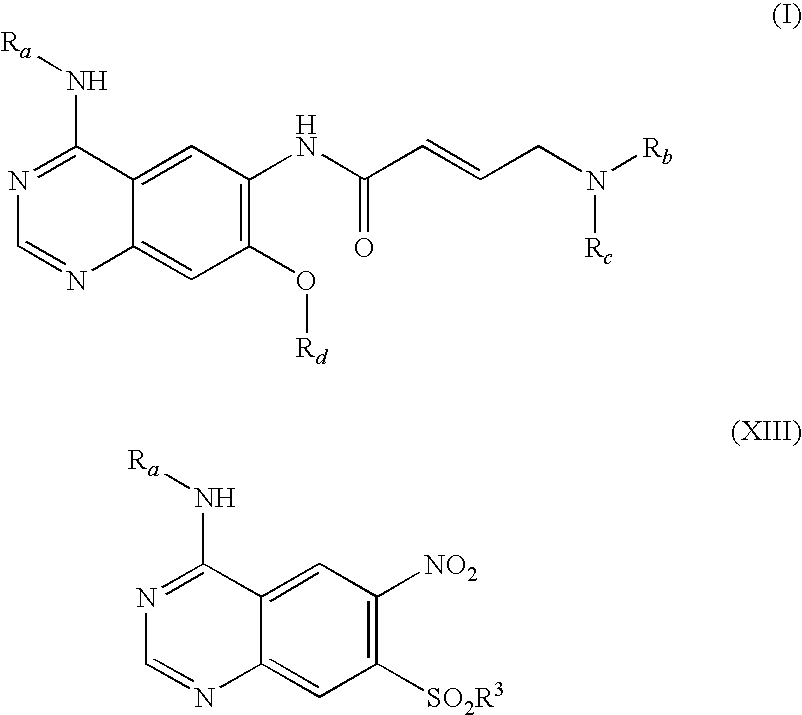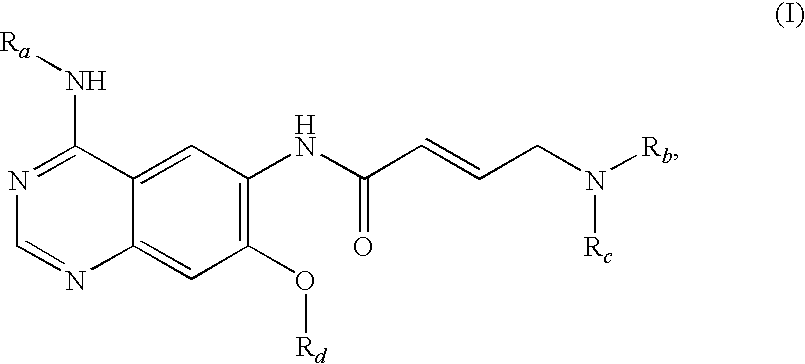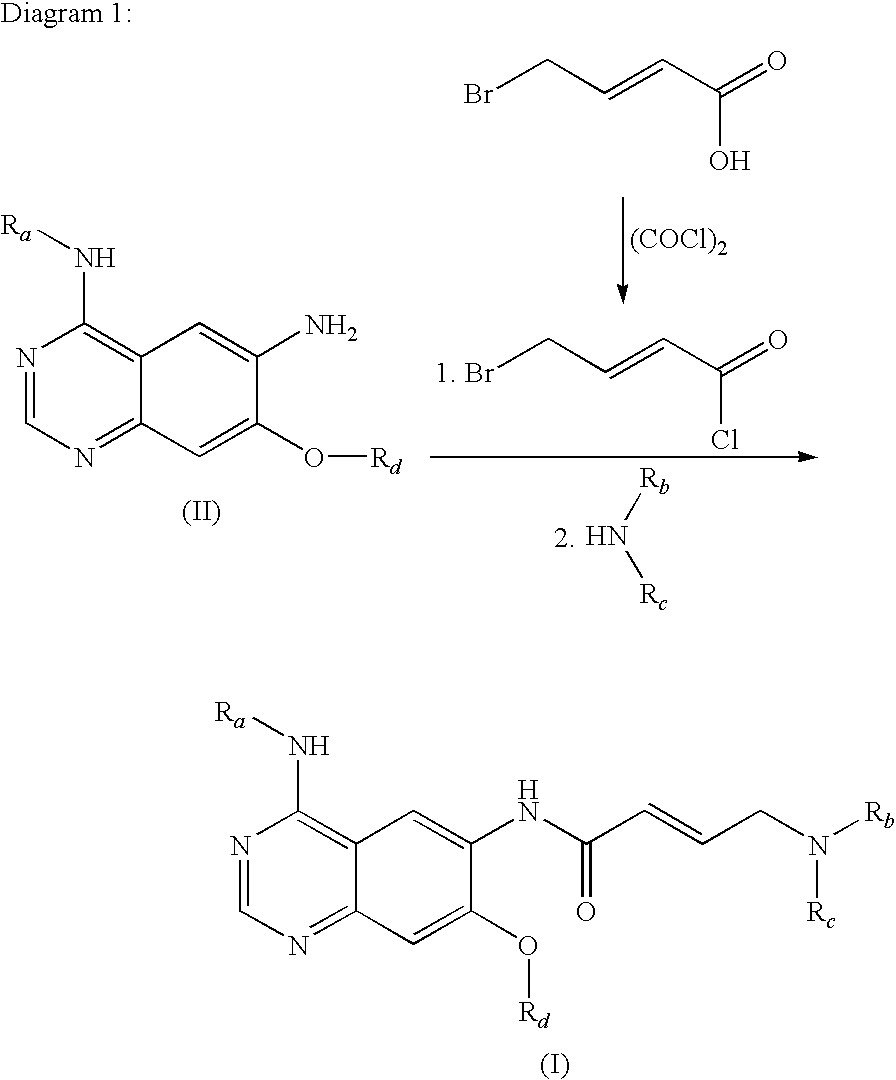Process for preparing aminocrotonylamino-substituted quinazoline derivatives
a technology of aminocrotonylamino and quinazoline, which is applied in the field of process for preparing aminocrotonylaminosubstituted quinazoline derivatives, can solve the problems of difficult use of thionyl chloride in step (c), poor suitability of the process for industrial use, and high cos
- Summary
- Abstract
- Description
- Claims
- Application Information
AI Technical Summary
Problems solved by technology
Method used
Image
Examples
example 1
4-(3-Chloro-4-fluoro-phenylamino)-7-chloro-6-nitro-quinazoline
[0061]20 g 7-chloro-6-nitro-3H-quinazolin-4-one are suspended in 80 ml acetonitrile and combined with 16.5 g phosphorus oxychloride. Then 10.8 g triethylamine are slowly added dropwise and the mixture is heated to about 80° C. After 5 hours a solution of 15.5 g 3-chloro-4-fluoroaniline in 100 ml dioxane is added dropwise and the mixture is stirred for another hour. Then 80 ml of water is added, the mixture is cooled to 20° C. and made slightly alkaline with KOH solution. The suspension is suction filtered, washed with water and ethanol and dried at 50° C. in vacuo.
[0062]Yield: 29.07 g (89.5% of theoretical / dioxane solvate)
[0063]m.p.: 272-274° C.
example 2
4-(3-Chloro-4-fluoro-phenylamino)-7-(phenylsulphonyl)-6-nitro-quinazoline
[0064]500 g 4-(3-chloro-4-fluoro-phenylamino)-7-chloro-6-nitro-quinazoline and 302 g (1.3 eq) benzenesulphinic acid sodium salt are suspended at 20° C. in 1500 ml DMF, heated to 90° C. and kept for 6 h at this temperature. After cooling the reaction mixture the suspension is suction filtered and the residue is rinsed with 1.5 l methanol, 10 l water and 0.5 l methanol. The residue is dried at 50° C. for about 12 h under reduced pressure.
[0065]Yield: 631.2 g (86.2% of theoretical / DMF solvate),
[0066]m.p.: 284-286° C.
example 3
4-[(3-Chloro-4-fluorophenyl)amino]-6-nitro-7-((5)-tetrahydrofuran-3-yloxy)-quinazoline
[0067]810 g of 4-(3-chloro-4-fluoro-phenylamino)-7-(phenylsulphonyl)-6-nitro-quinazoline and 175.5 g (S)-3-hydroxytetrahydrofuran (1.3 eq) are placed at 20° C. in 1.041 tert-butanol and 198 ml DMF, 2556 g K-tert.-butoxide in THF (24%) (3.6 eq) are added dropwise at 20°G and then stirred for 4 h at 25° C. After a further 2 h at 40° C. the mixture is heated to 45° C. for about 2 h. 2.8 l of water are added and then about 3 l solvent are distilled off under reduced pressure. 2.8 l water are added again and about 900 ml solvent are distilled off under reduced pressure. After the addition of 1.6 l methanol the mixture is cooled to 20° C. The suspension is suction filtered and rinsed with a mixture of 3.2 l water and 1.6 l methanol. The residue is dried overnight at 50° C. under reduced pressure.
[0068]Yield: 598.6 g (89.6% of theoretical),
[0069]m.p.: 238-240° C.
PUM
| Property | Measurement | Unit |
|---|---|---|
| volume | aaaaa | aaaaa |
| temperature | aaaaa | aaaaa |
| temperature | aaaaa | aaaaa |
Abstract
Description
Claims
Application Information
 Login to View More
Login to View More - R&D
- Intellectual Property
- Life Sciences
- Materials
- Tech Scout
- Unparalleled Data Quality
- Higher Quality Content
- 60% Fewer Hallucinations
Browse by: Latest US Patents, China's latest patents, Technical Efficacy Thesaurus, Application Domain, Technology Topic, Popular Technical Reports.
© 2025 PatSnap. All rights reserved.Legal|Privacy policy|Modern Slavery Act Transparency Statement|Sitemap|About US| Contact US: help@patsnap.com



